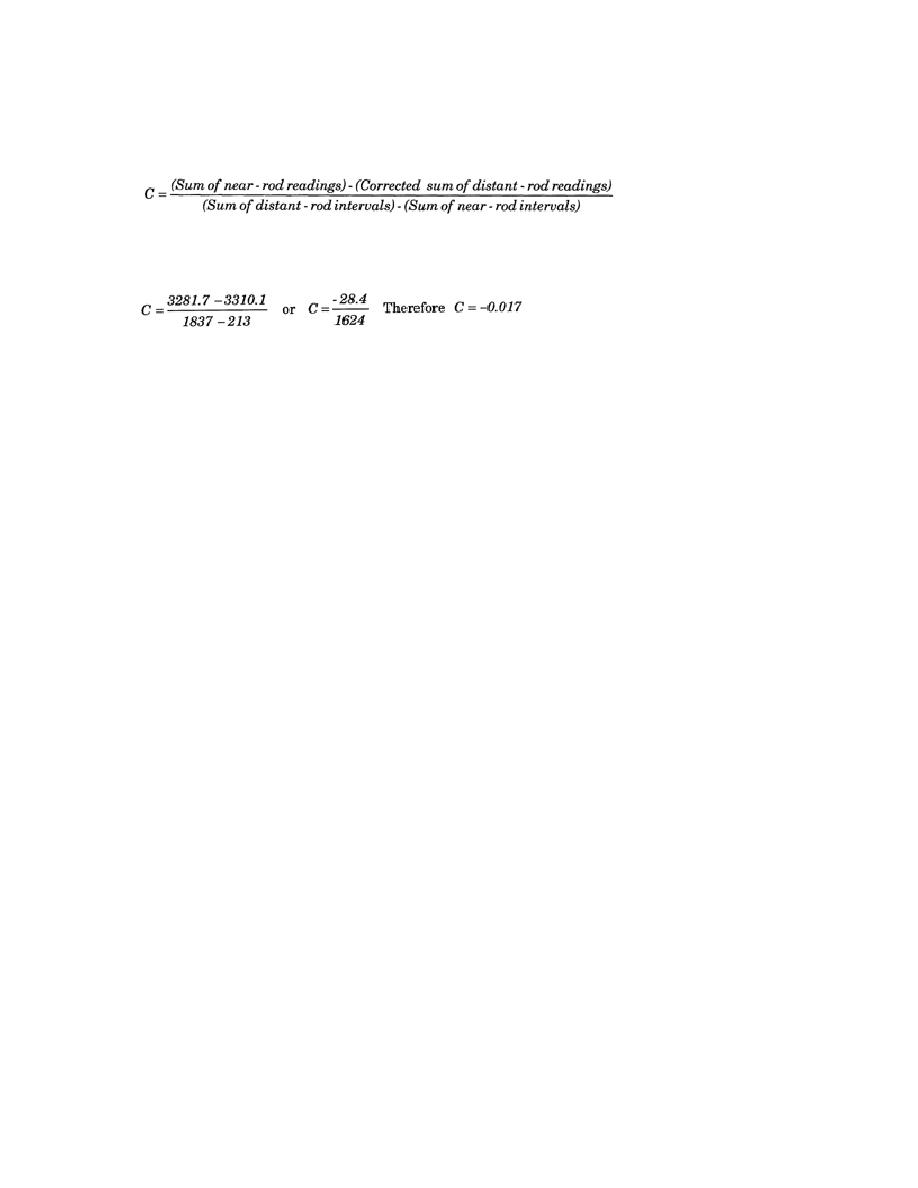
(i) (11) The required constant, C, is the ratio of the required rod readings to the
corresponding subtended interval and can be determined using the following formula:
Substituting the values from the sample into the above formula, the new formula becomes--
(3) If the total of the mean readings in column (7) is larger than the total of the mean readings in
column (4), C carries a minus value. If the opposite occurs, C carries a plus value. Compute the value
of C to the nearest unit in the third decimal place.
(4) The maximum permissible C factor varies with the stadia constant of the instrument. If C
exceeds 0.010 when using the N-3 level with a stadia constant of 1/300, adjust the instrument by .007.
(5) If an adjustment of the level is made, immediately redetermine the C factor. Adjust the level
by raising or lowering the time of sight by an amount equal to C times the total foresight rod interval (-4
millimeters in the example). The N-3 instrument is adjusted by loosening the locking screw for the
protective glass (10) (Figure 4-2, page 4-6). Turn the rim of the protecting glass in the appropriate
direction until the middle thread intercepts the distant rod at the desired reading. If care is exercised, the
level bubble will remain in coincidence. Complete the adjustment by tightening the locking screw. If
the instrument receives a severe jolt, which might disturb its adjustment, immediately make a new
determination of the level error and adjust the level if the C factor exceeds 0.010. Always note the time
and the date of C factor determinations, as this information is essential to the accuracy of the
c. Adjust the Leveling Rods. At least once a month and any time it receives a severe shock during
leveling, the leveling rod should be tested and the plumbing level adjusted. If the deviation from the
vertical in either direction exceeds 10 millimeters on a 3-meter rod, adjust the rod level. Record the
method and results in the level notebook under test of rod verticality.
4-9. Methods and Procedures. When all instrument tests and adjustments are complete, the
instrument man is ready to begin leveling. The methods and procedures discussed here are applicable to
both first- and second-order leveling.
a. Precise Leveling. Precise leveling uses the three-wire technique. The program of observation at
each instrument station uses the following procedures:
4-15
EN0593



 Previous Page
Previous Page
